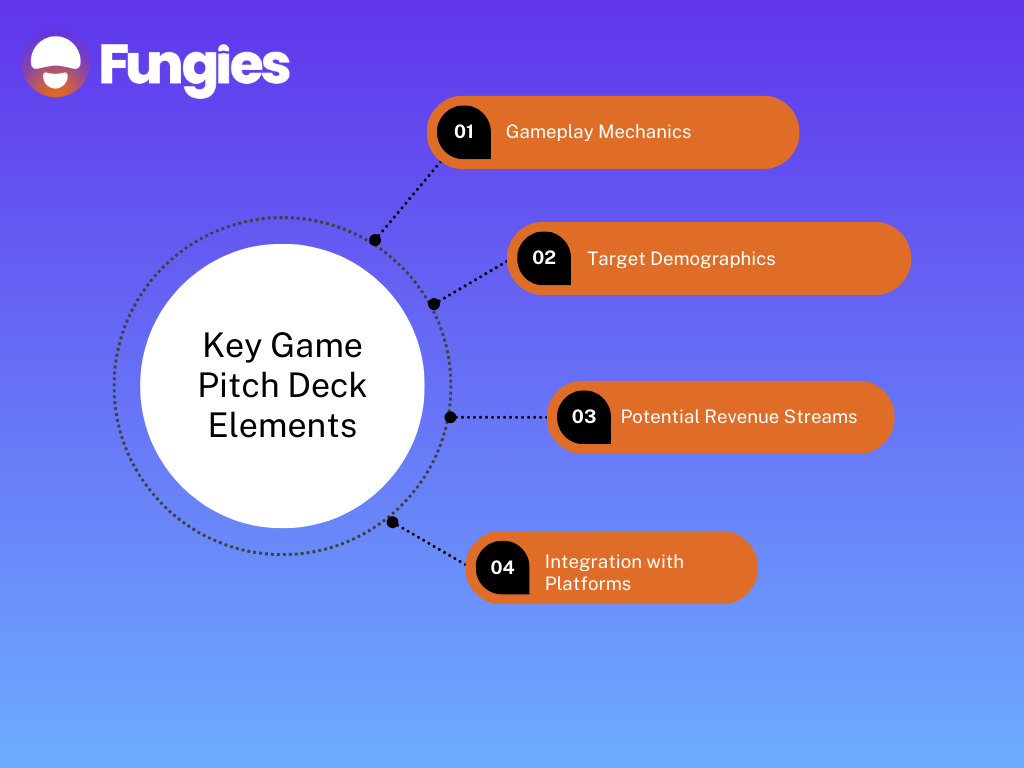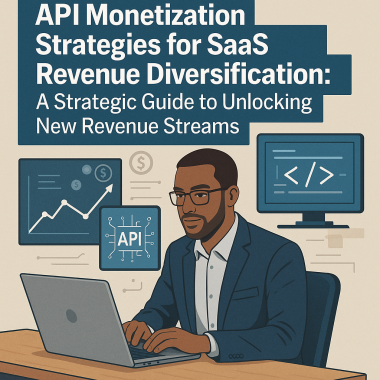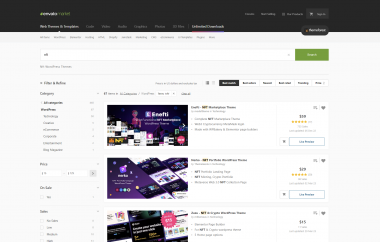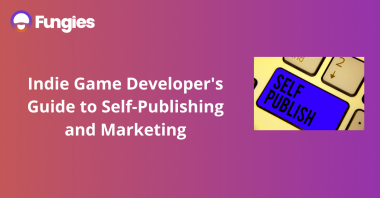Turning your innovative game idea into a captivating pitch is an art, and in today’s rapidly evolving gaming world, it’s more crucial than ever. Let’s dive into the significance of effective pitching and how emerging tools are reshaping opportunities for indie developers.
The Art of Pitching

For indie game developers, the creation of a game is just the beginning. Once you’ve birthed your idea, the next essential step is effectively conveying its value and potential to others. Pitching moves you beyond the realm of mere creation and into the sphere of potential commercial success, allowing your concept to resonate with stakeholders, potential partners, and investors.
Evolving Opportunities for Indie Developers
The gaming industry isn’t what it used to be. Indie developers, once confined to the fringes, are now at the forefront of innovation and creativity. With this change comes a wealth of new opportunities, but also fresh challenges. Among the most transformative developments is the rise of no-code solutions. These platforms empower developers to build, deploy, and monetize games without getting entangled in complex coding tasks, leveling the playing field and opening doors previously shut to many indie creators
Navigating the Game Idea Terrain

As an indie developer, it’s vital to be aware of the market’s ebbs and flows. Knowing what’s in demand and understanding the value of your unique concept can position you a step ahead of the competition.
Tapping into Current Desires
Today’s gaming landscape is a diverse and dynamic ecosystem. Developers and companies alike are on the constant lookout for the next big thing – be it a groundbreaking gameplay mechanic, a compelling narrative, or a fusion of genres. Staying attuned to industry trends, player preferences, and market gaps can provide a clearer direction for your pitch, ensuring it aligns with what’s in demand.
Standing Out in a Crowded Space
With countless games being released every year, the market might appear saturated at first glance. However, it’s this very saturation that amplifies the value of distinct and original ideas. Companies and investors are not just looking for another game; they’re searching for unique experiences that captivate and differentiate. By ensuring your game idea brings a fresh perspective or innovative element, you not only rise above the noise but also significantly increase the chances of your concept being embraced and funded.
Polishing Your Game Blueprint
Before presenting your idea to potential partners or investors, it’s paramount to ensure it’s well-structured and visually compelling. A thoroughly refined concept not only showcases professionalism but also communicates your game’s potential more effectively.
Crafting a Cohesive Vision
First and foremost, having a clear narrative, gameplay mechanics, and a defined target audience lays a solid foundation for your pitch. Delve deep into your game’s story, exploring its characters, their motivations, and the world they inhabit. Clearly outline gameplay elements, ensuring they align with the narrative and offer an engaging player experience. Identifying your target audience early on will also guide design choices and marketing strategies down the line.
Visualizing Your Game Idea
While a good idea is the starting point, tangible visuals can be the difference between a nod of approval and a pass. Mockups, prototypes, and storyboards serve as invaluable tools in this process. They provide a clearer understanding of your vision, making it easier for potential stakeholders to grasp the game’s potential and envision its final form. Remember, showing often has a stronger impact than just telling.
Embracing Constructive Feedback
No game idea is perfect from the get-go. Iterative design, which involves cycles of refinement based on feedback, is crucial in fine-tuning your concept. Conduct market testing to gauge player reactions and gather insights. Listen to the feedback, both positive and critical, and use it as a compass to guide your game towards a more refined and market-ready version. This not only ensures your game resonates with its intended audience but also demonstrates flexibility and a commitment to excellence.
Conveying Your Game Idea
When you’re ready to pitch your game, remember: a pitch isn’t just about sharing an idea—it’s about selling it. Crafting a compelling pitch is both an art and a science, requiring thoughtful preparation and strategic presentation. Let’s delve into how you can ensure your pitch resonates with potential partners, investors, or publishers.
The Pitch Framework
Every strong pitch follows a basic structure: an engaging introduction, a comprehensive body, and a memorable conclusion. Start by capturing attention with a compelling hook—perhaps a brief anecdote or a provocative question related to your game. The body should detail the game’s mechanics, target audience, and monetization strategies. Wrap up by reiterating the game’s potential and opening the floor for questions or discussions.
Key Inclusions for Impact
While each pitch will vary based on the game and audience, there are some universal elements to include.

Gameplay Mechanics
Clearly articulate the innovative and feasible gameplay mechanics that set your game apart. Whether it’s a unique player progression, an immersive world-building aspect, or a fresh multiplayer interaction, ensure you explain how it elevates the gaming experience.
Target Demographics for Your Game Idea
Define who you believe will be most captivated by your game. Provide data or trends that showcase the potential size and purchasing power of this market segment. This assures potential partners that there’s a sizeable audience eager for your game.
Potential Revenue Streams
Discuss revenue projections and how you plan to monetize the game. This could be through in-game purchases, ads, or even licensing deals. By showcasing a well-thought-out revenue strategy, you validate the commercial potential of your game idea.
Integration with Platforms
Highlight the ease of integrating your game with cutting-edge platforms, particularly emphasizing no-code storefronts. Explain how these platforms can simplify game distribution and sales, making your game not just engaging but also market-ready with minimal friction.
Utilizing Engaging Tools

To enhance your pitch’s effectiveness, leverage multimedia tools.
Slide Decks
A visually compelling slide deck can guide your presentation and retain your audience’s attention. Populate your slides with crisp graphics, concise bullet points, and key data to enhance clarity and impact.
Gameplay Videos
Offering a snippet of actual gameplay can provide a tangible feel of your game’s look and mechanics. It gives potential partners or investors a firsthand glimpse of the player experience you’re aiming to deliver.
Others
Consider incorporating other tools, like player testimonials, early reviews, or mock-ups of how your game would appear on a no-code storefront. Each additional element should add value to your pitch, making it both informative and unforgettable.
Leveraging No-Code Storefronts
No-code storefronts have recently emerged as a transformative tool for game studios, streamlining the journey from game conception to its market debut. These platforms have the potential to give your pitch a distinct edge, emphasizing not just the appeal of your game but also its readiness for a seamless launch.
Boosting Your Pitch with No-Code Platforms
The inclusion of a no-code storefront strategy in your pitch illustrates forethought about the game’s distribution and scalability. By demonstrating how easy it is to integrate with these platforms, you can effectively reduce perceived risks related to technical complexities or extended launch timelines.
Highlighting Monetization
No-code storefronts can significantly bolster your revenue model. They offer direct avenues for sales, subscriptions, or in-game purchases. By detailing how you plan to utilize these storefronts for monetization, you present a clear strategy for profitability.
Enhancing User Acquisition
Apart from monetization, no-code storefronts facilitate targeted user acquisition campaigns. They provide tools and strategies to bring your game directly to its intended audience. This demonstrates to potential investors or partners that you have a practical approach to capturing and retaining a player base.
Emphasizing Scalability
The beauty of no-code storefronts is their scalability. As your game gains traction, these platforms can handle increased user loads without demanding complex backend overhauls. By incorporating this into your pitch, you assure potential partners of your game’s capability to grow without hitting technical snags.
Navigating Your Game Idea Target Audience
Successfully pitching your game goes beyond the content of the presentation; it’s also about knowing and engaging the right audience. By meticulously selecting who you approach and how, you enhance the likelihood of your game idea finding the right home.
Identifying Potential Partners
It’s essential to put in the groundwork. Take the time to research potential developers or companies whose philosophy and past works resonate with your game’s ethos. By aligning with like-minded entities, you increase the chances of mutual interest.
Building Strategic Connections

Cultivating meaningful relationships within the gaming industry can be the gateway to potential partnerships. It’s about knowing where to look and how to present yourself.
Industry Events
Participating in these gatherings can offer face-to-face interactions with potential partners or investors, opening doors for collaborations.
Online Forums
Dedicated forums for game development serve as platforms to share, discuss, and connect. These digital communities can be goldmines for feedback and networking.
Direct Outreach
Never underestimate the power of a well-crafted email or message. Personalized communication can pique interest and pave the way for deeper discussions.
Personalizing Your Pitch
While your game concept remains constant, the way you present it should vary based on your audience. A generic, one-size-fits-all approach lacks the personal touch that resonates with potential collaborators. Tailor your pitch to address the specific interests and needs of each entity, demonstrating not just your game’s potential but also your deep understanding of their objectives and how your game aligns with them.
Sealing the Deal: The Negotiation Craft
Once you’ve captured interest with your pitch, the next critical phase is negotiation. This stage is where your understanding of your game’s worth and your ability to forge a beneficial agreement come into play. Effective negotiation ensures that your brainchild receives the recognition and compensation it deserves.
Recognizing Your Game Idea Worth
It’s imperative to have a clear understanding of the value your game idea brings to the table. This encompasses more than just potential revenue; it’s about innovation, uniqueness, and the potential to fill gaps in the market. Having this clarity positions you confidently when discussions about financials and rights commence.
Ironing Out the Contractual Nuances
This step involves diving deep into the specifics. Whether it’s revenue shares, intellectual property rights, or any other contractual stipulations, ensure that you’re well-informed and represented. Consult with legal professionals if necessary, as they can provide insights into industry norms and protect your interests.
Striking a Mutual Beneficial Agreement
While it’s crucial to advocate for your game’s worth, remember that successful negotiations are rooted in mutual benefit. It’s a delicate dance of upholding your interests while understanding and respecting the needs of the developer or company. The aim is to create an agreement where both parties feel they’re embarking on a venture that offers both value and potential.
Navigating the Waters of Rejection
Every indie developer will face rejection at some point. However, the way you interpret and respond to these setbacks can greatly influence your long-term success. Let’s delve into how you can pivot from rejection to opportunity.
Deciphering the “No”
It’s essential to remember that every rejection doesn’t inherently mean your game idea is flawed. Sometimes, it’s merely a misalignment with a particular developer’s or company’s vision. Differentiate between feedback that points to a lack of fit and that which suggests tangible areas for improvement. Use this insight as a roadmap to refine your concept.
Refining Based on Feedback

Rejections often come with invaluable feedback, even if it’s implicit. Was there a particular aspect of your pitch that consistently raised questions or concerns? Use these insights to adapt and strengthen your proposal. This iterative process can help you better align with industry demands and expectations.
Standing Tall Amidst Challenges
Rejection can be tough, especially when you’ve poured your heart and soul into a project. But resilience is a hallmark of successful indie developers. Equip yourself with coping strategies, lean on your support networks, and remember that many of today’s hit games faced numerous rejections before finding the right fit. Your passion and persistence will be your compass, guiding you through the challenges towards eventual success.
Wrapping Up Your Game Idea Journey
From the spark of an idea to the thrill of negotiation, turning your game vision into a tangible opportunity is both challenging and rewarding. Yet, every step, every refinement, and every pitch makes your idea stronger and brings it closer to reality.
Adapting to the Modern Gaming Landscape
The gaming world is constantly evolving, presenting both challenges and opportunities for indie developers. By staying updated with the latest tools and trends, such as no-code storefronts, you not only enhance your pitch but also future-proof your game for potential success in a competitive market.
A Word of Inspiration
It’s vital to remember that every blockbuster game, every beloved indie title, began as a mere idea in someone’s mind. Your game concept, with the right approach and continuous refinement, has the potential to be the next big thing. Stay passionate, stay resilient, and embrace the journey.






